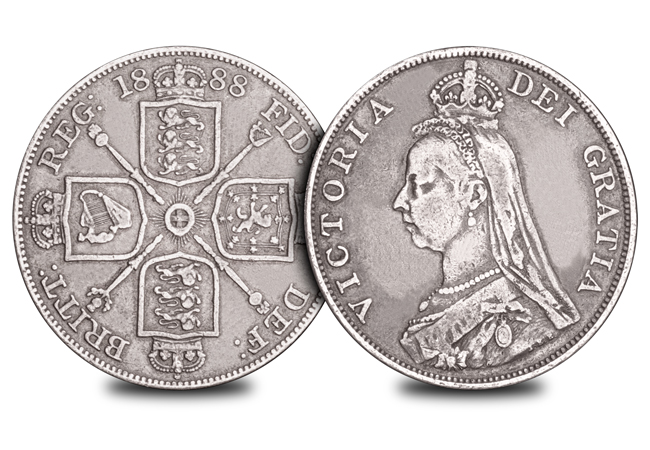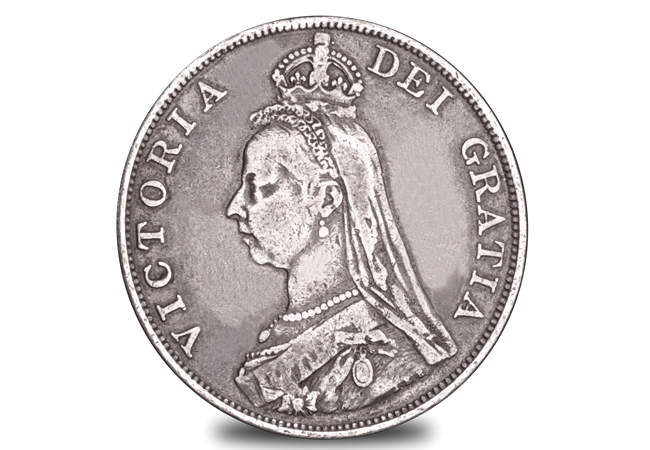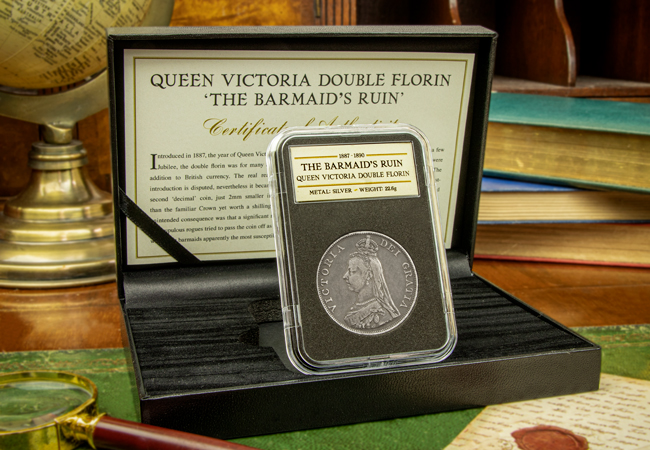In 1887 for her Golden Jubilee, Queen Victoria authorised a new portrait for circulating coinage, as well as a new denomination. This saw the introduction of the Double Florin, which later led to the loss of Barmaid’s jobs and only circulated for 3 years.
Featuring a brand-new portrait of the Queen that became colloquially known as the ‘Jubilee Head’ portrait, the Double Florin was the equivalent of 1/5th of a pound or 48 pennies. However, this coin wasn’t terribly well received and was withdrawn from circulation completely by 1890.

But why?
The Double Florin was only produced for four Mint years, partly because the public thought that the crown was balanced precariously on her head and didn’t reflect the Queen with the grace that she deserved. Because of the split public opinion, the portrait was shortly replaced just six years after it was introduced.

But there’s more to the story of the Double Florin.
One of the features that makes the Double Florin stand out in history is that it was almost indistinguishable from the Crown coin. Neither carried the denomination, and the only difference between the two (apart from the Crown being one shilling greater in value), was that the Double Florin was 2mm smaller – not something that was easy to spot by eye.
Due to the similarity between the two coins, they were easily confused, which lead to the Double Florin adopting the nickname The Barmaid’s Ruin. As public houses got busier as the night went on, it was said that Barmaid’s would often be fooled by con men into taking the Double Florin as a Crown when dealing with change. Whether an honest mistake or the result of criminals, many a Barmaid lost their livelihoods as a result of disgruntled, short-changed pub landlords.
If you’re interested…
I have a very limited number of Victorian Double Florins especially for my CPM clients.
